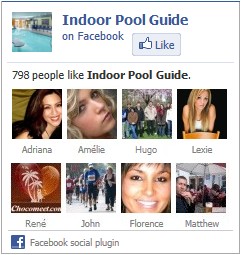
Overview
The maintenance of equipment should only be undertaken by suitably qualified persons and in strict accordance with manufacturers’ recommendations. Incorrect maintenance can not only lead to a shortened equipment life span, but in some circumstances may place operator and public safety at risk.
There are two philosophies regarding maintenance. The first is a reactive approach. This involves waiting until equipment is faulty before taking action. This approach is fraught with peril, as there is also the risk of damage to ancillary equipment in event of total failure. For example, circulation pump bearing failure may result in damage to the pump motor. Managers should also consider the unscheduled interruption to operations and customer service.
A more responsible attitude toward equipment maintenance is the proactive or preventative approach. This involves periodical, or programmed, maintenance of equipment within set timeframes— monthly, quarterly and annually. The primary advantage to this approach is that any interruption to operation can be scheduled for a time that will have the least impact on customer service.
Manufacturers are a good source of information as to when and what maintenance is required to keep equipment operational, as well as a budget estimate of cost.
The following plant and equipment should be considered in a periodical maintenance schedule:
• Circulation pumps
• Dosing pumps/feeders
• Heating hot water pumps
• Filters
• Control panels
• Sample cells
• Heat exchanger/calorifier
• Disinfection system
• Pipes and valves
• Sensors
• Heaters/boilers
• Air handling units
• Meters and gauges.
Winterisation
Winter and off-season care of a swimming pool is important to prevent potential damage to the pool structure and equipment.
If a pool must be emptied, it is advisable to do so for the minimum amount of time possible. When full, there is equal pressure exerted on the pool structure from the water within as well as from groundwater and the surrounding earth on the outside. When emptied there is no longer the support of the water within the pool. This can lead to movement and subsequent damage to the pool structure and can result in water leakage when refilled. The result can be excessive water usage, inability to maintain temperature (if heated) and a drop in water quality.
It is therefore safer, easier and more economical to keep the structure protected from temperature and pressure changes that may cause cracking and straining of the pool structure and expansion joints by leaving the pool filled.
General Procedure for Winter Care
Traditionally, in Australia, outdoor pools are left full of water and unattended during winter or the off-season. This results in a significant build-up of contamination from organic material (leaves, algae, etc). This is usually dealt with by draining the pool and scrubbing the walls and floor, before re-filling and treating in preparation for usage.
Alternatively, utilise a winter/seasonal maintenance program. This involves periodical water turnover, testing, chemical addition, including superchlorination, and vacuuming to minimise debris, algae and corrosion. This should result in minimum expense and preparation time before reopening for the new season. Algae can be prevented by maintaining good disinfectant residuals and avoiding excessive cyanuric acid levels, as this may reduce the effectiveness of the chlorine in controlling algae. It is important that any chemicals used during a winterisation program do not leave any undesirable residues.
Unattended Pools
If the pool is left unattended, the following action should be taken:
Pumps
• Power should be disconnected.
• Surface corrosion should be removed.
• The shaft of the pump should be periodically rotated.
Gas Chlorinators
• Decommissioning and servicing should be according to the manufacturer’s recommendations and only by suitably qualified personnel.
• Incorrect servicing of this equipment can be life-threatening.
Erosion (Tablet) Feeders
• Decommission and flush clean according to the manufacturer’s recommendations.
• Adequate safety precautions should be taken when opening the feeder, as chlorine gas may have formed.
Sensors
• Sensors should be removed, cleaned and stored in an appropriate wetting solution.
• The manufacturer will usually be able to supply instructions, as well as wetting solution and bottles, for this purpose.
• Sensors should not be left to dry out, as this will cause irreparable damage.
Chemical Dosage Pumps
• Flush the head by placing the suction hose of the pump into a bucket of fresh water and manually operate the pump for a short period.
• Clean the exterior with warm soapy water (with the power disconnected!) to remove any build-up of chemical residue.
• Pumps and injectors should also be serviced at this time by qualified personnel.
• Replace any worn or damaged chemical delivery tubing.
Heaters/Boilers
• Maintenance and decommissioning/ recommissioning should be carried out according to the manufacturer’s recommendations and only by suitably qualified personnel.
Winter/Seasonal Maintenance Program
In addition to the actions described for the above equipment, the following procedure should also be carried on a regular basis by operators utilising a winter/seasonal maintenance program:
• Add fresh water to the pool to restore the volume to the normal operating level.
• Turn on the circulation system and allow it to run for at least one turnover period. Pumps may need to be primed.
• Vacuum the pool.
• Backwash the filters.
• Measure and manually adjust the water chemical parameters (disinfectant, pH, alkalinity, cyanuric acid, calcium hardness, etc).
• Shut down the circulation system.

